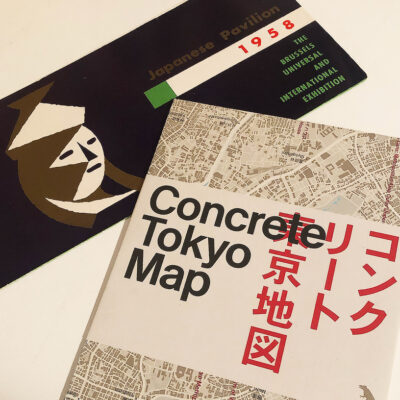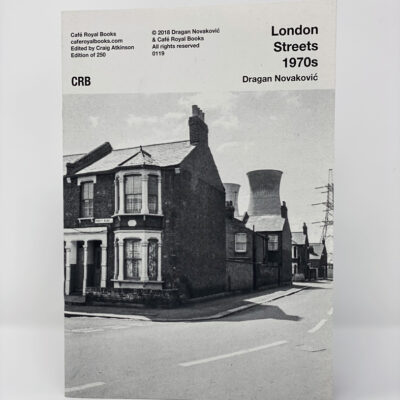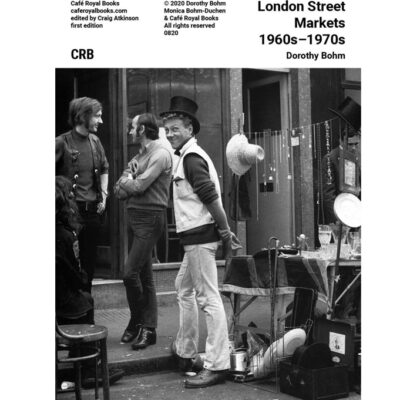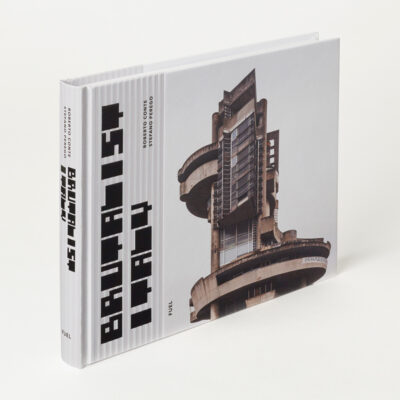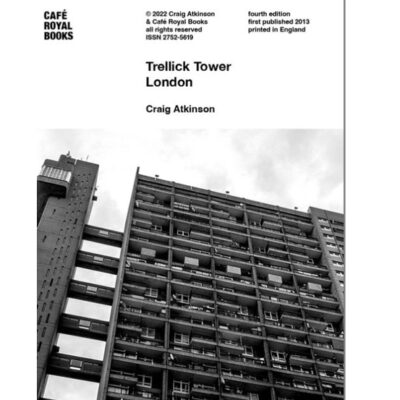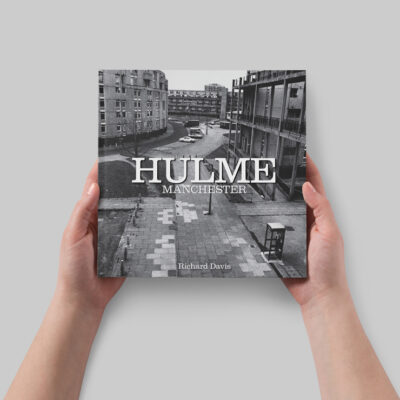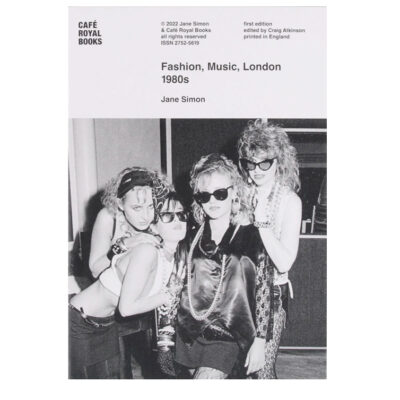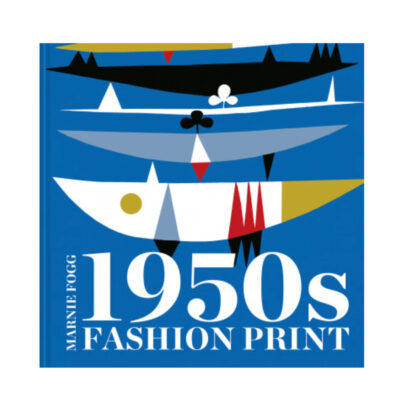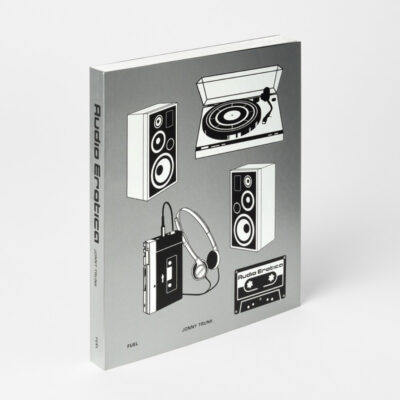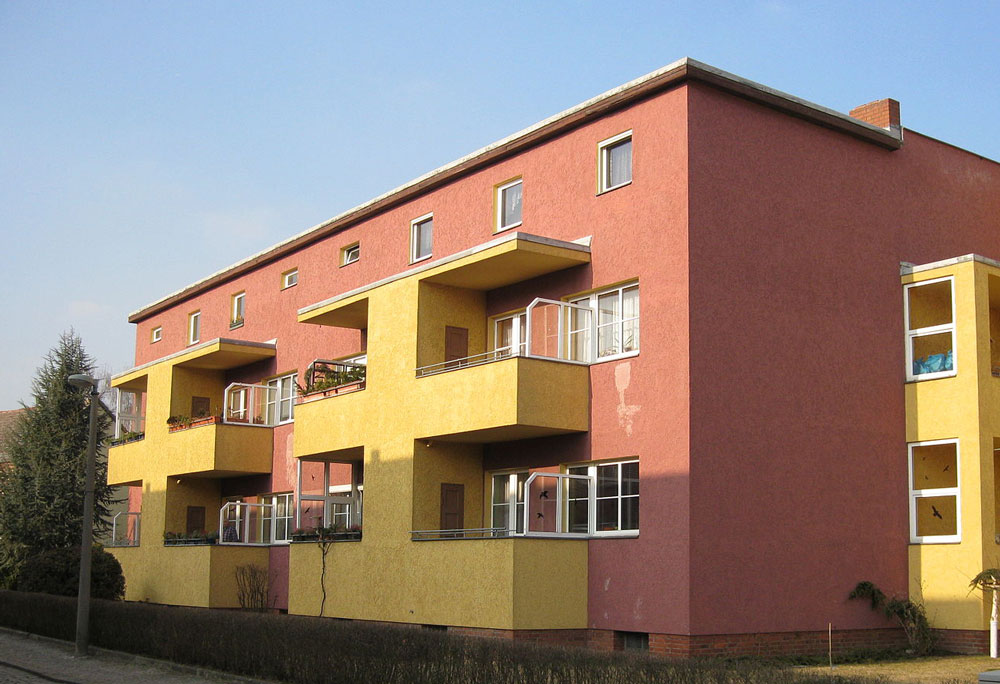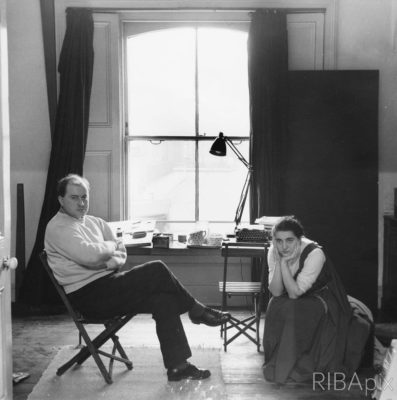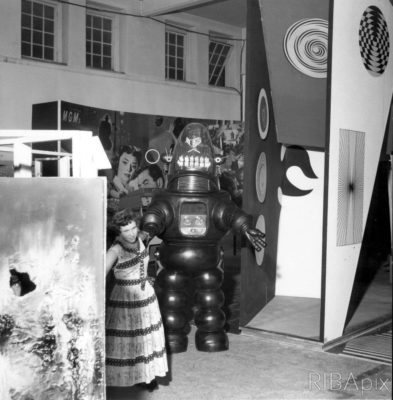New Brutalists’ “Japanese” Pavilions
The “reverence for the natural world” – the Japanese architectural influence on New Brutalism and its realisation.
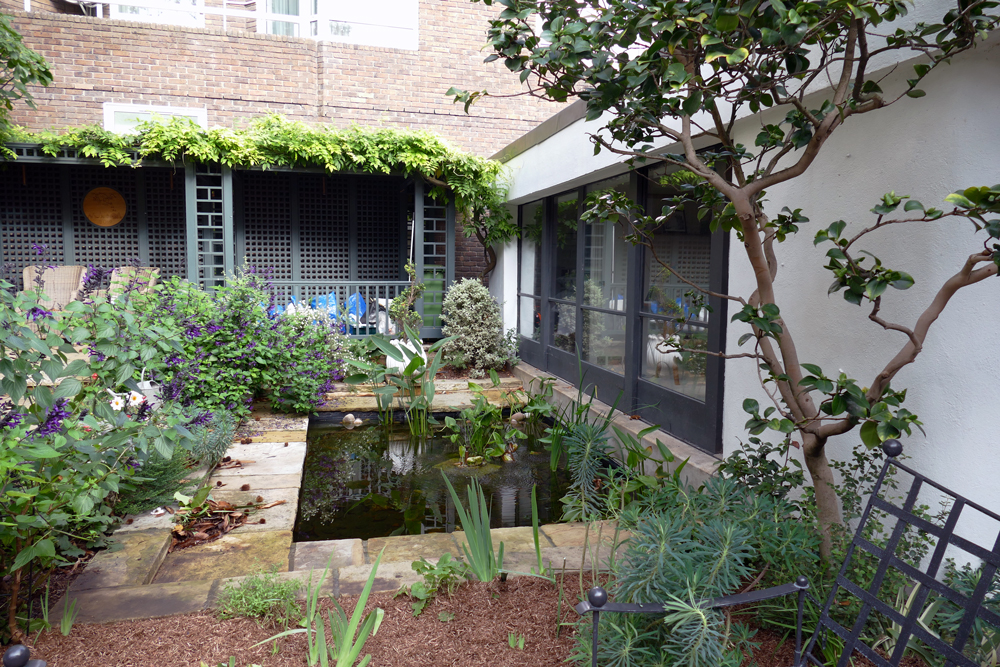
View of Crosby’s extension of The Lacket showing the living room (left) and bedrooms (right)
In Autumn 2020 Juliana Kei, Lecturer in Architecture at the University of Liverpool, was able to visit two overlooked house extensions that reflect the tenets of New Brutalism – one in Bayswater by Alison and Peter Smithson and the other The Lacket by Theo Crosby. What captured Juliana’s attention was that underpinning the two designs were their idea of New Brutalism.
In Reyner Banham’s 1966 book New Brutalism: Ethic or Aesthetic, Juliana explains, he made reference to a one-page article published in the January 1955 issue of the Architectural Design, as the “manifesto” of New Brutalism. The article in question was written by Alison and Peter Smithson, and Theo Crosby, who was at the time the technical editor of the AD and a close friend of the Smithsons. In current studies of post-war British architecture, Crosby has been recognised as an effective behind-the-scene promoter for the Smithsons’ and the Independent Group’s (IG) works. In addition to using the AD as a conduit to disseminate the ideas of the IG milieu, Crosby is also credited as the organiser of the 1956 This is Tomorrow exhibition held at the Whitechapel Gallery in London. This article retrieves the 1955 New Brutalism “manifesto.” Juliana continues, I will also use two house extensions designed by Crosby and the Smithsons, for the same client, to examine their propositions in the manifesto.
In the AD manifesto, Crosby and the Smithsons dedicated the introduction, and five out of the seven paragraphs on the importance of Japanese architectural influence on the Modern Movement and New Brutalism.
They declared,
‘Our belief that the New Brutalism is the only possible development for this moment from the Modern Movement…because fundamentally both movements have used their yardstick Japanese architecture – its underlying idea, principles, and spirit.’
They went on to explain that, through Japanese architecture, New Brutalism found a “reverence for materials” and a close affinity with “peasant dwelling forms”, which resulted in an “architecture as the direct result of a way of life.” They even suggested that the Smithsons’ Hunstanton School “owes as much to the existence of Japanese Architecture as to Mies.”
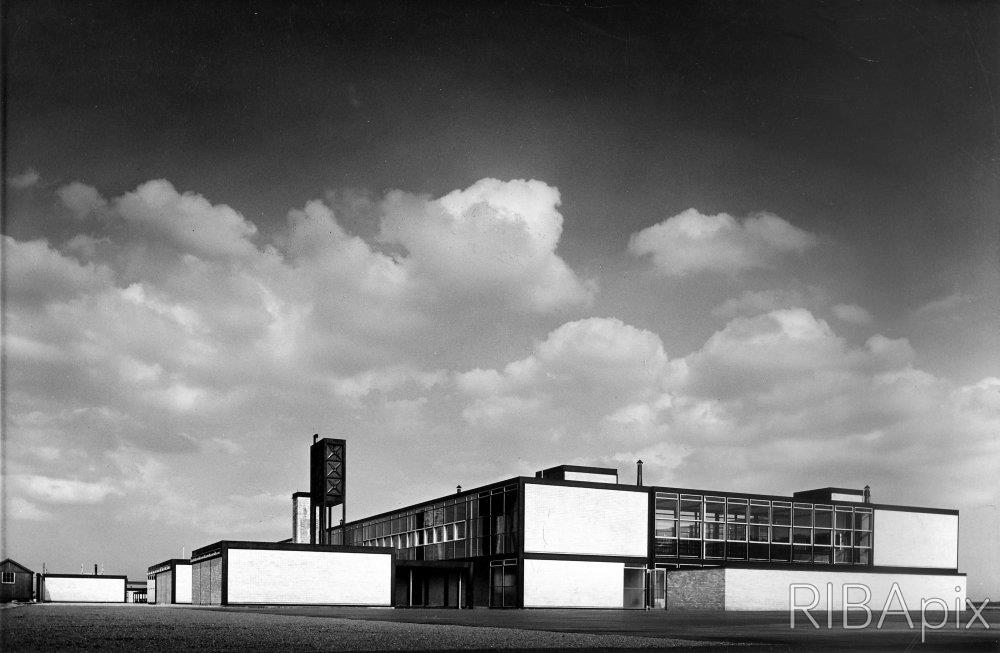
Hunstanton Secondary School, Alison and Peter Smithson RIBA Collections
The manifesto is puzzling. Neither the Smithsons or Crosby had been to Japan at the time of the article’s publication, and their knowledge about Japan mostly came from films and books written by Bruno Taut in the 1930s. However, a different vision of New Brutalist architecture emerges when Japanese architecture is used as a lens to review Crosby and the Smithsons’ works.
In This is Tomorrow, for example, Group 1 (Crosby, Edward Wright, Germano Facetti, and William Turnbull) and Group 6 (the Smithsons, Eduardo Paolozzi, and Nigel Henderson) installation both emphasised the changeable and replaceable quality of artworks in a mass-produced structure.
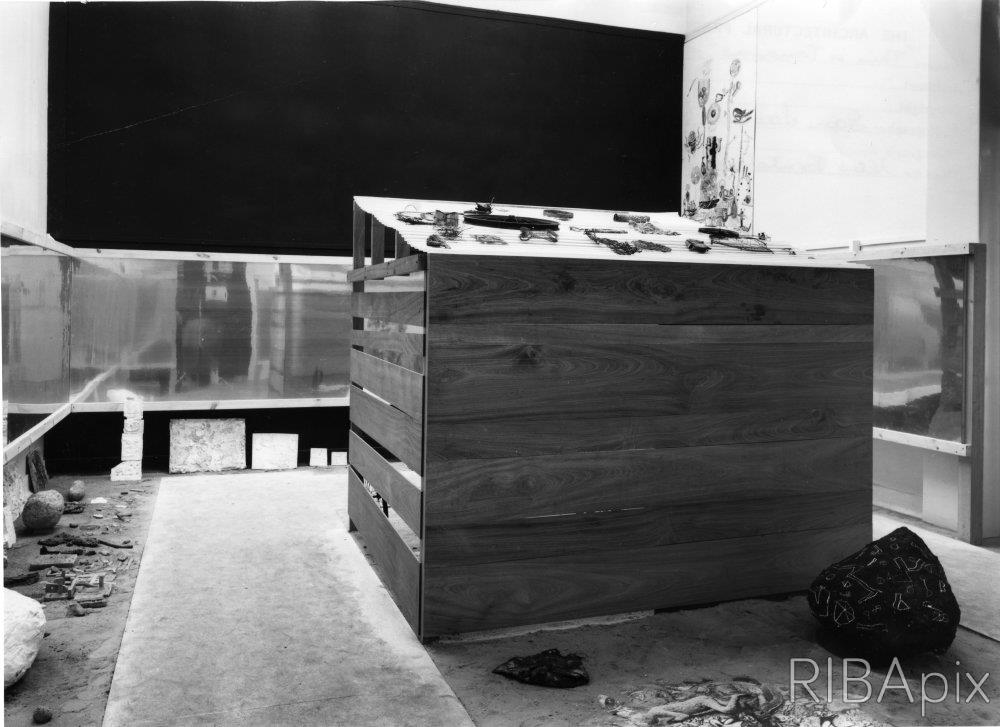
Group 6 Architectural Press Archive / RIBA Collections
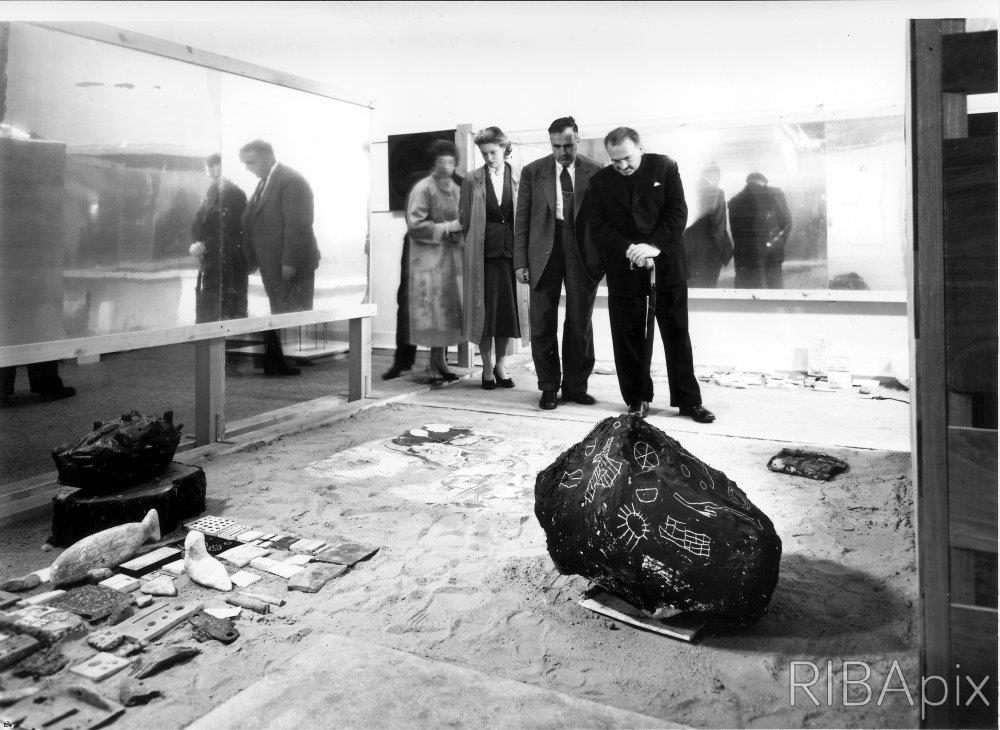
This Is Our Tomorrow Group 6 John Maltby / RIBA Collections
This relationship between arts and architecture responded directly to the concept of Tokonoma – an alcove in traditional Japanese houses designated for an object that corresponds to the season– that was celebrated by Taut. Both installations manifested a different approach towards the integration of arts and architecture from the other groups: the integration was through a clear delineation of and dedication to artworks, rather than blurring the boundary between arts and architecture.
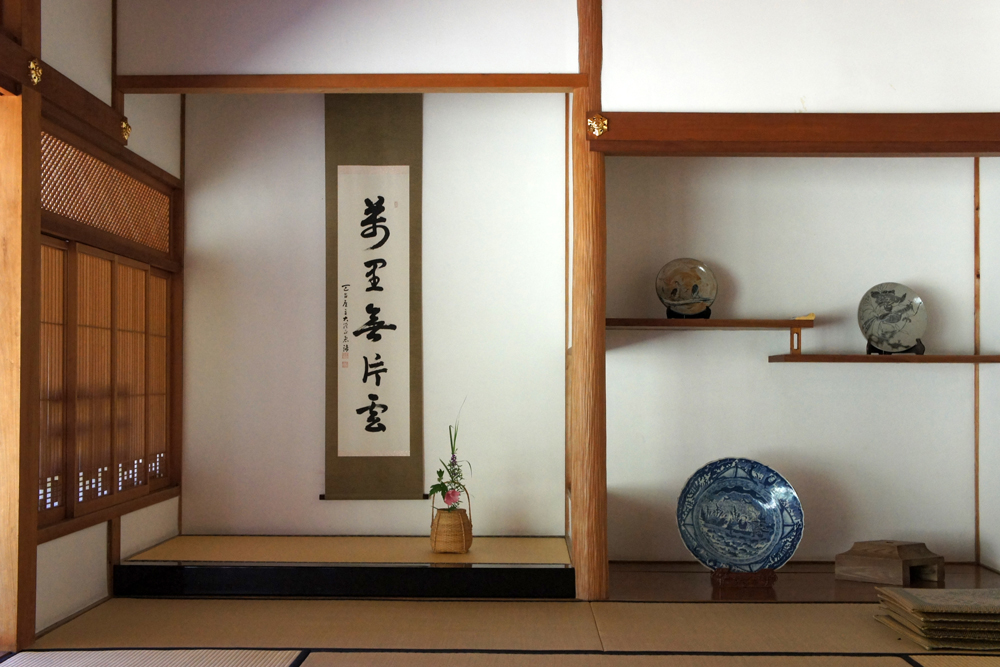
Tokonoma, Tottori Prefecture CC BY 2.5
Two years after the exhibition, Crosby and the Smithsons were offered another opportunity to realize their thinking on New Brutalism. The premise was similar to This is Tomorrow they devised their respective “pavilions” under a similar design brief. In 1958, Wayland Young (Lord Kennet), then a junior minister of Housing and Local Government, commissioned the Smithsons to design an extension for his Victorian-era house on Bayswater Road, London. He also asked Crosby to build an addition to the Kennet family’s 18th-century cottage, called The Lacket, in Wiltshire. The function of the extensions are similar, too: both include a living room and two bedrooms. The Smithsons extension also has a bathroom, while Crosby added a storage room for the cottage.
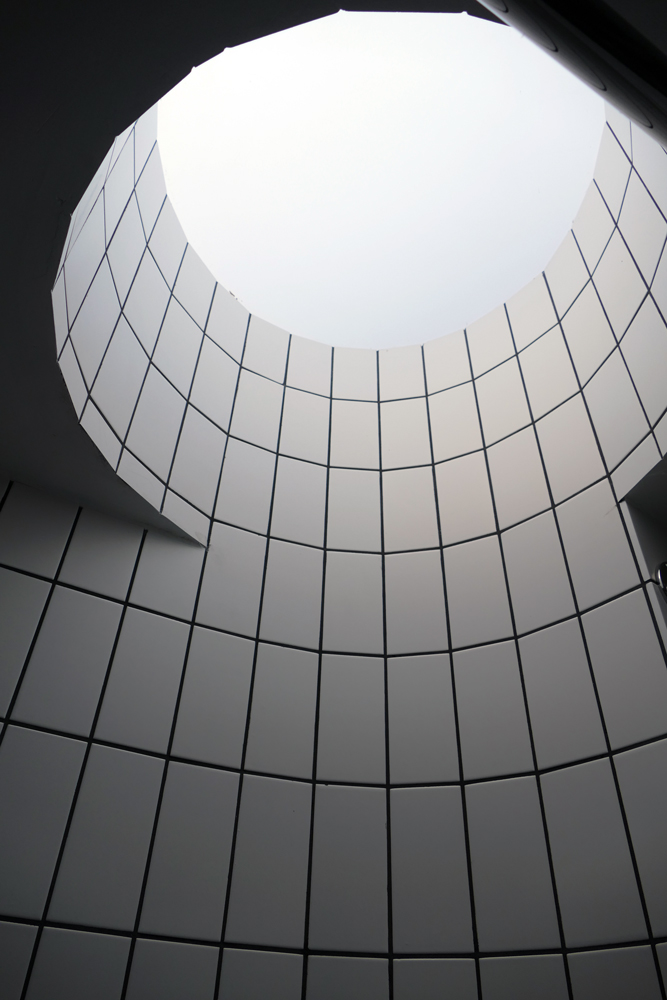
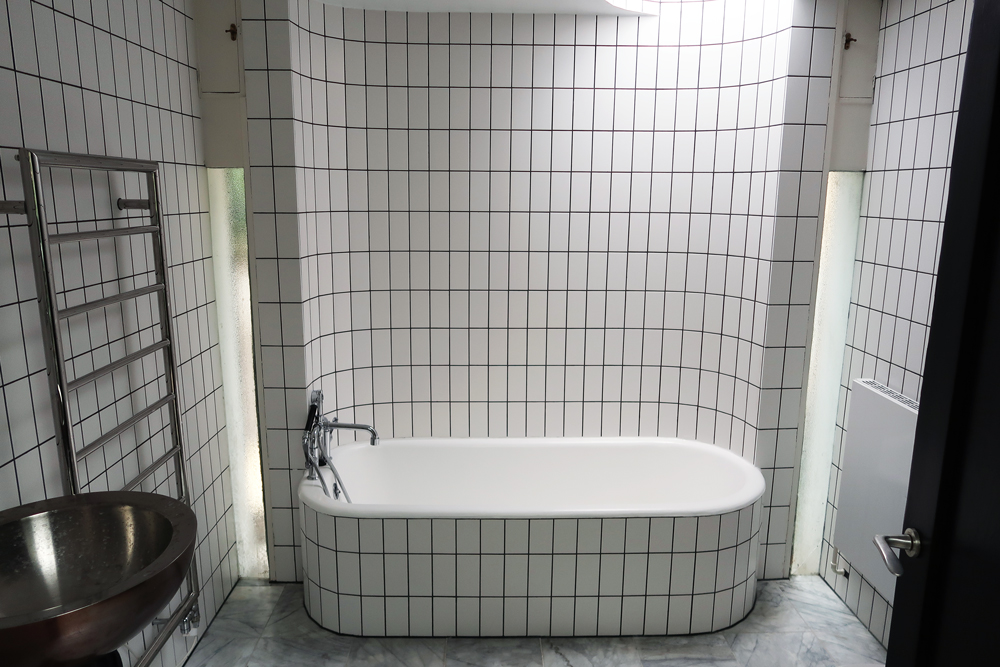
The bathroom and bathroom skylight of 100 Bayswater Road extension.
At first glance, the house extensions do not look that similar. Crosby’s Lacket addition is a Z-shaped volume with three components, whilst the Smithsons’ extension in Bayswater appears as one entity. The Bayswater extension is rendered white with an exposed concrete roof. The Lacket addition is partly cladded with cedar panelling and partly constructed with local stone. [Crosby’s extension to the Lacket perhaps shares more material similarities with the Smithsons’ own summer home near Fonthill, Wiltshire.] However, a closer examination of the two houses reveals approaches that resonate with the 1955 New Brutalism manifesto and This is Tomorrow. Notably, both extensions used industrial prefabricated glass roofs which were unusual for houses, in particular in the notorious British weather. In the Smithson extension, the rooms are placed in parallel to the old garden wall of the house.
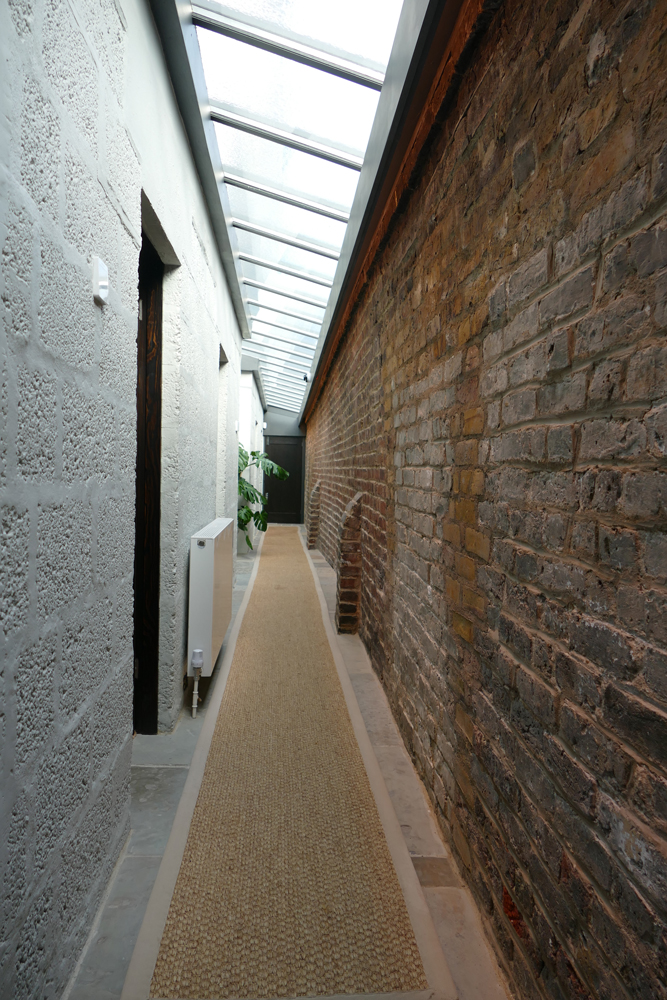
Corridor of the Smithson’s extension.
A corridor, which connects the extension and the old house, is created between the rooms and the wall. An existing sycamore tree was maintained and used to define the location and size of the rooms. For the roof of the corridor, the Smithsons chose industrialized sheet glass which was trimmed to accommodate the tree trunk. On the one hand, the extension reflected the “as-found” ideal of New Brutalism: the design was determined by the existing brick walls, trees, and garden, and completed with everyday mass-produced materials. On the other hand, the result was a space that was not completely sealed. A similar condition can be said about Crosby’s design at The Lacket. The living room space was constructed with Sarsen, a particular English stone that was salvaged from an old building on the property. The structure is topped with an industrial lantern roof. Again, the living room at the Lacket can also be described as a semi-outdoor environment. Both designs reflect the “reverence for the natural world” that was articulated in the New Brutalism manifesto but are also not entirely inhabitable on cold winter days.
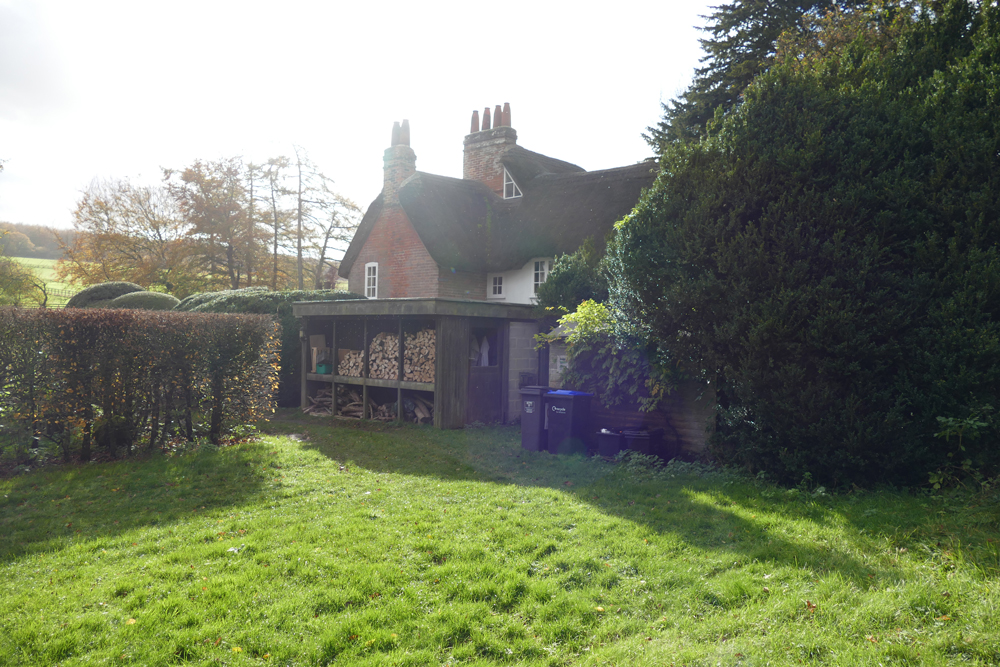
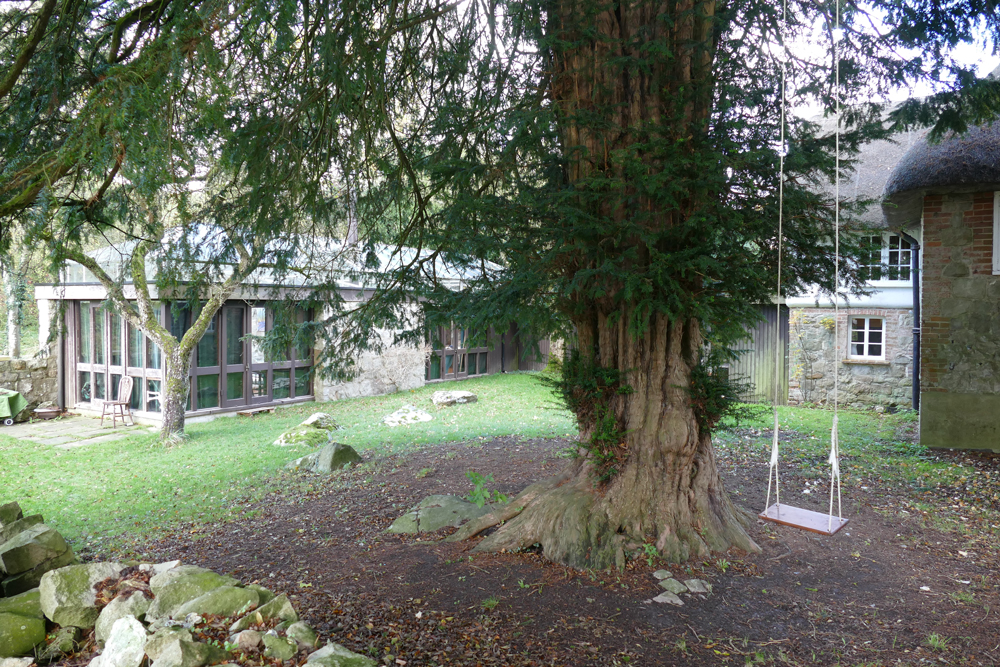
Two images of The Lacket after its recent renovation including the storage in Crosby’s extension
Also worth noting is that both extensions can be described as a pavilion and a route – another important design tenet of the Smithsons. This reconceptualization of a house as elementary modules (the rooms) connects by a route (the corridor) again reflects the influence of traditional Japanese house design. In particular, in the Katsura Palace in Kyoto – a building that was celebrated by Taut and other early Modernist masters – one can find a similar approach of using semi external corridors to connect modular rooms.
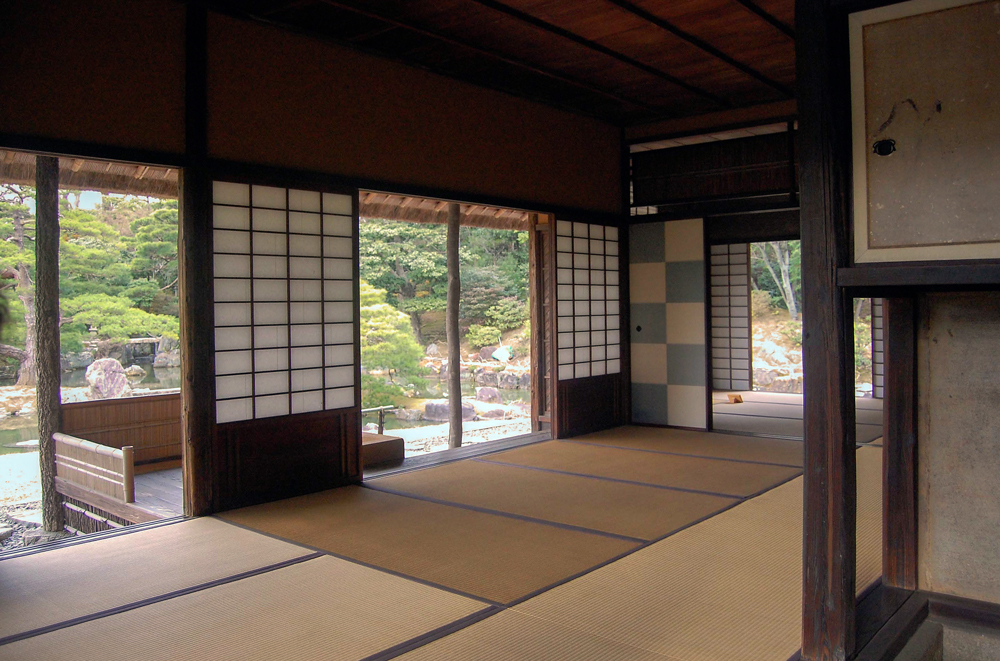
Shokin Tei, the Tea Pavilion of Katsura Imperial Villa Image: R Azevado Franca
As in the Katsura, this arrangement was devised to mediate the stylistic and material differences between an elder part of the building and new extensions. In the Smithsons’ Bayswater extension, the reference to Japanese architecture is also made explicit by using movable panels to sub-divide the rooms. There was also free-standing timber poles – another motif found in Taut’s study of Japanese houses – that was used to support a writing desk.
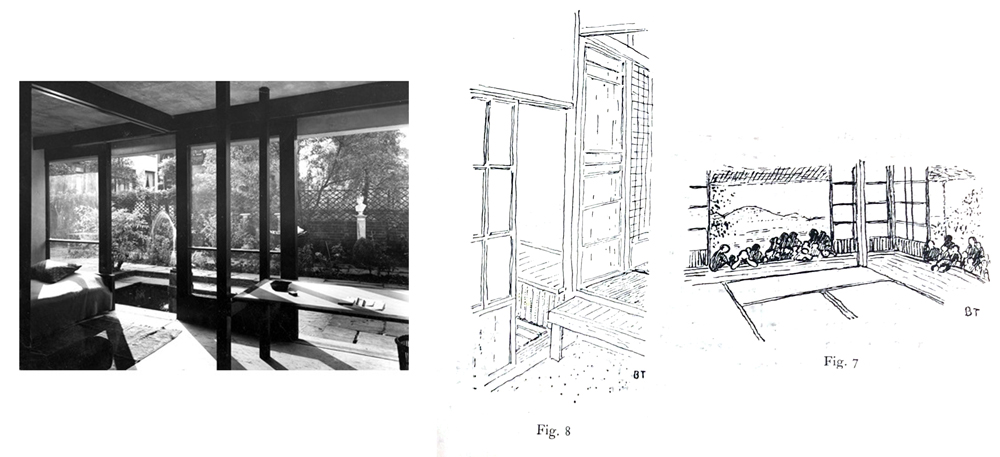
Interior of the 100 Bayswater Road extension designed by the Smithsons alongside an illustration from Bruno Taut’s House and People of Japan.
Through Japan, respect to history and historical fabric was mooted in Crosby and the Smithsons’ articulation of New Brutalism and their extension designs. Yet it can also be seen as a tension that pulled their relationship apart, not long after the completion of the two pavilions in 1960. (Although they maintained contact and collaborated occasionally) After encountering Jane Jacobs’ The Death and Life of Great American Cities, Crosby turned into an advent advocate for preservation. Crosby, later as a founding partner of the multidisciplinary design firm Pentagram, dedicated most of his energy to interior, renovation and refurbishment projects. The only major building that he completed in central London was the Shakespeare’s Globe, an “authentic” reconstruction of the 16th-century theatre. His design at The Lacket, therefore, can be regarded as one of Crosby’s last built works for New Brutalism, and also a link between his post-war neo-avant-gardism and preservationist tendencies.
About Juliana Kei
Juliana is a Lecturer at the Liverpool School of Architecture. She is currently completing a monograph on Theo Crosby with Stephen Parnell and Alan Power to be published by Lund Humphries. As part of the Hong Kong Design History Network, she is a curator of the Hong Kong Pavilion in the London Design Biennale, June 2021.
Juliana also wants to express her gratitude to Matt Woollven from Giles Quarme Architects and Thoby Young, the current Lord Kennet for their generous input in this research.
Follow Juliana
Twitter @yatshunkei
Instagram @julikei
The history of 100 Bayswater Road
The house dates from 1820 and became the home of the author JM Barrie in 1900 and it was here that he wrote Peter Pan which was published in 1905.




